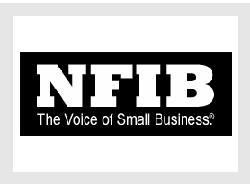Small Business Optimism Rose to 100.2 in August
Washington, DC, September 8, 2020-The NFIB Optimism Index increased 1.4 points in August to 100.2, a reading slightly above the historical 46-year average.
Seven of the ten Index components improved, two declined, and one was unchanged. The NFIB Uncertainty Index increased two points in August to 90, the second-highest reading since 2017.
“Small businesses are working hard to recover from the state shutdowns and effects of COVID-19,” said NFIB chief economist Bill Dunkelberg. “We are seeing areas of improvement in the small business economy, as job openings and plans to hire are increasing, but many small businesses are still struggling and are uncertain about what the future will hold.”
The NFIB Uncertainty Index rose two points in August to 90, the second-highest reading since March 2017. The record reading of 100 was reached in November 2016.
Other key findings include:
• Earnings trends over the past three months improved seven points to a net negative 25% reporting higher earnings.
• Job openings increased three points to 33% of firms with at least one unfilled position.
• The percent of owners thinking it’s a good time to expand increased one point to 12%.
• Real sales expectations in the next three months decreased two points to a net 3%.
As reported in NFIB’s monthly jobs report, job creation plans increased three points to a net 21%, an unprecedented recovery from April’s reading of 1%. Construction job growth continues to be strong but owners in the sector are having a particularly hard time finding skilled employees. The manufacturing sector’s employment remained strong but not as strong as seen in previous months. The service sector is the missing link and the key to stronger job growth going forward.
Forty-seven percent of owners reported capital outlays in the last six months, down two points from July and 16 points below January’s level. The low levels of investment are contributing to low GDP growth. Twenty-six percent plan capital outlays in the next few months, unchanged from July’s reading.
Of those making expenditures, 34% reported spending on new equipment, 21% acquired vehicles, and 12% improved or expanded facilities. Six percent acquired new buildings or land for expansion and 9% spent money for new fixtures and furniture.
